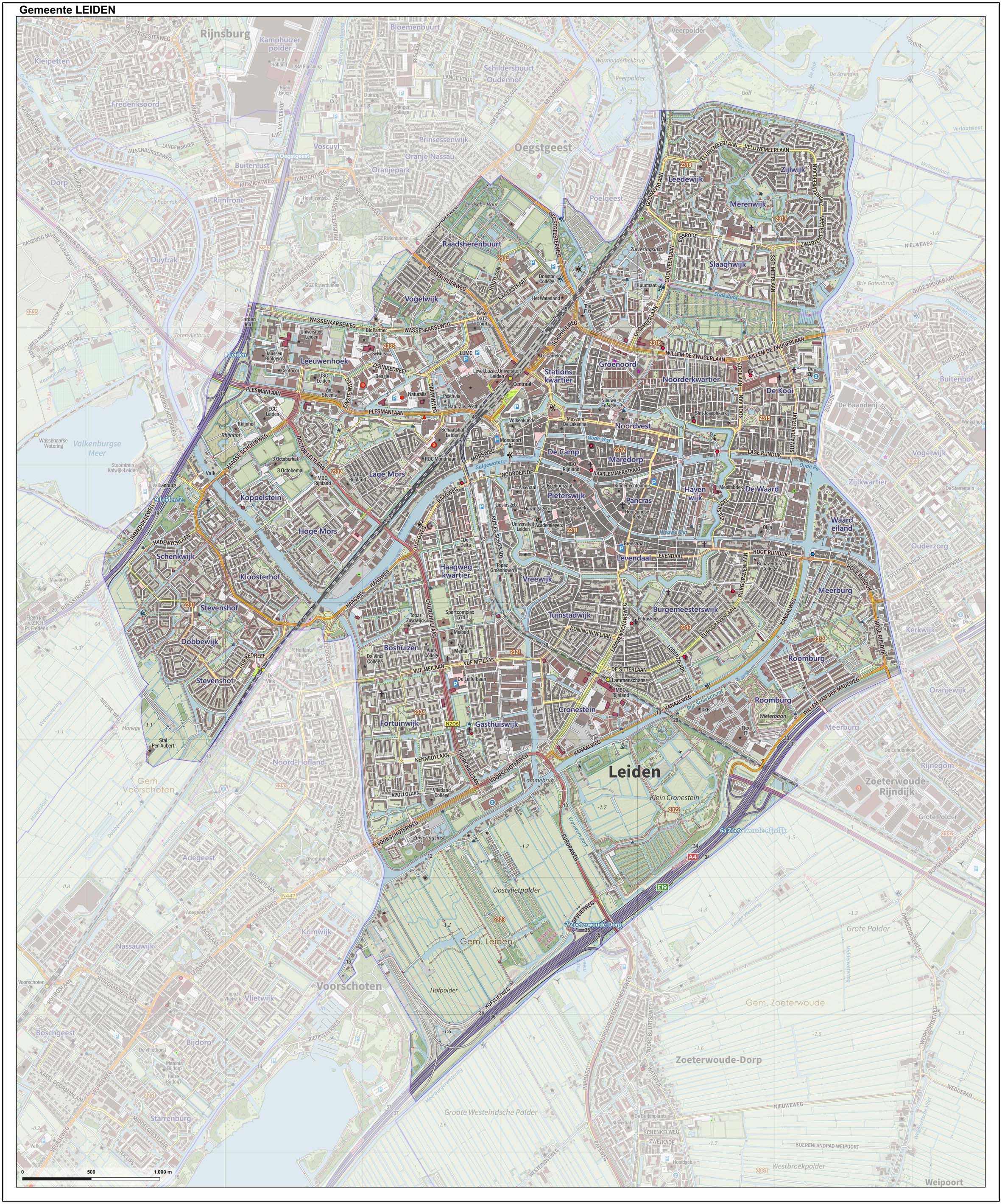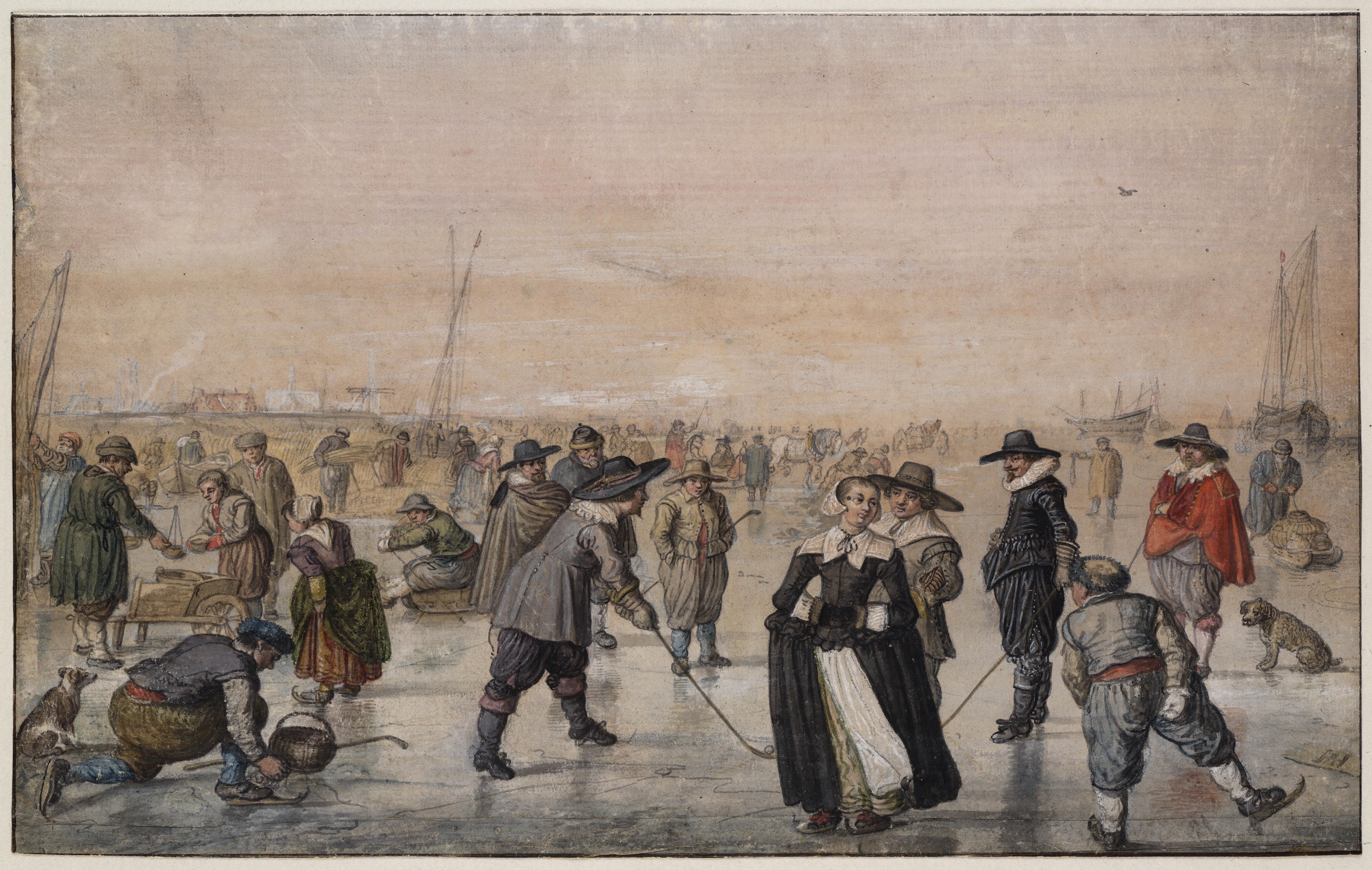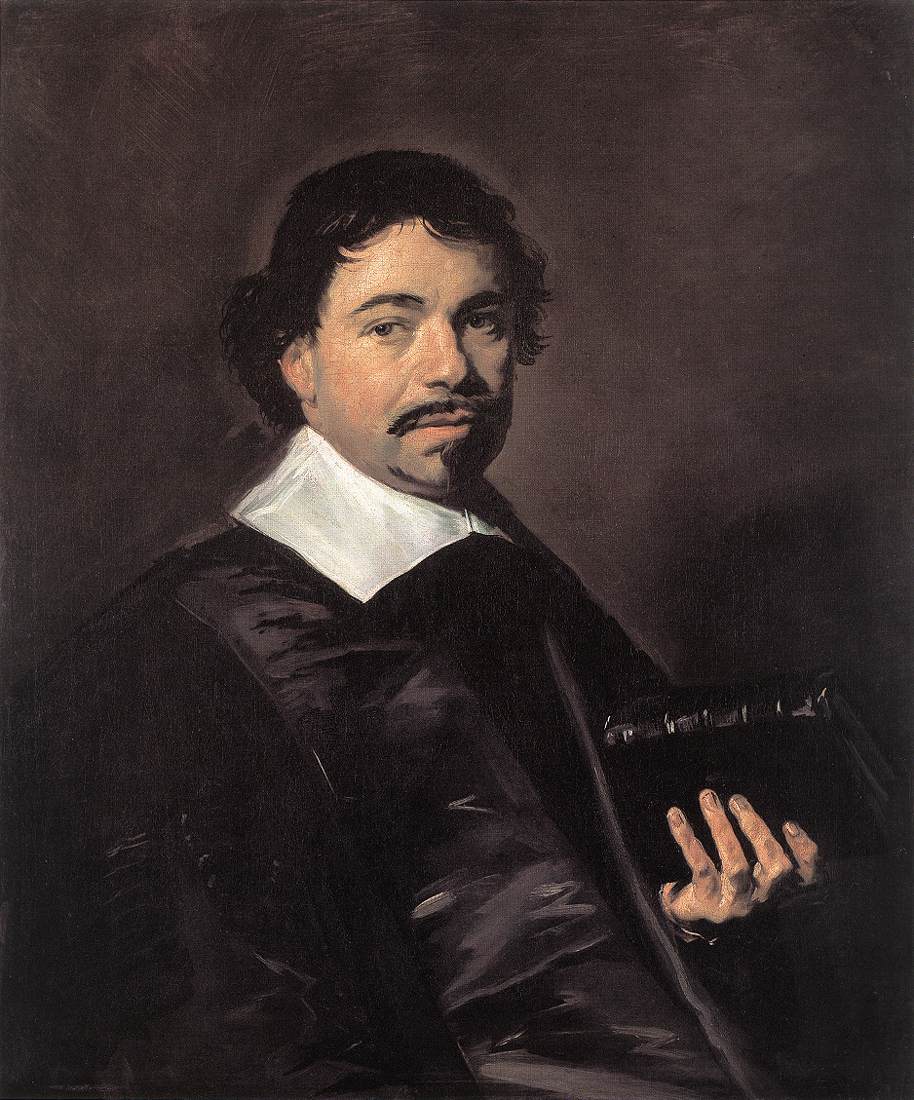|
Abraham Heidanus
Abraham van Heyden or van Heiden ( la, Abraham Heidanus or '; 1597–1678) was a Dutch Calvinist minister and controversialist, sympathetic to Cartesianism. Life He was born in Frankenthal in the Palatinate, son of Gaspar van der Heiden the Younger, a Reformed minister and Counter-Remonstrant who moved to Amsterdam in 1608. Abraham studied theology at the University of Leiden from 1617, travelled to Heidelberg, Geneva and Paris, and was influenced by Ramism and Jean Daillé. He returned to an appointment as minister in Naarden in 1623, moving to Leiden in 1627. In 1648 Heidanus was appointed professor of theology at the University of Leiden. In 1650 he invited Johannes Cocceius to join him on the faculty there. Battle lines were being drawn up for an extended series of controversies, in which Gisbertus Voetius of Utrecht took the other side. In 1655 Johannes Hoornbeeck contributed to the debate between Voetians and Cocceians a sabbatarian pamphlet. Heidanus wrote ''De Sabbate ... [...More Info...] [...Related Items...] OR: [Wikipedia] [Google] [Baidu] |
Gisbertus Voetius
Gisbertus Voetius ( Latinized version of the Dutch name Gijsbert Voet ; 3 March 1589 – 1 November 1676) was a Dutch Calvinist theologian. Life He was born at Heusden, in the Dutch Republic, studied at Leiden, and in 1611 became Protestant pastor of Vlijmen, whence in 1617 he returned to Heusden. In 1619, he played an influential part in the Synod of Dort, at which he was the youngest delegate. In 1634, Voetius was made professor of theology and Oriental science at the University of Utrecht. Three years later he became pastor of the Utrecht congregation. He was an advocate of a strong form of Calvinism ( Gomarism) against the Arminians. The city of Utrecht perpetuated his memory by giving his name to the street in which he had lived. Utrecht controversy with Descartes In March 1642, while serving as rector of the University of Utrecht, Voetius persuaded the university's academic senate to issue a formal condemnation of the Cartesian philosophy and its local defender, Henric ... [...More Info...] [...Related Items...] OR: [Wikipedia] [Google] [Baidu] |
Leiden University Alumni
Leiden (; in English and archaic Dutch also Leyden) is a city and municipality in the province of South Holland, Netherlands. The municipality of Leiden has a population of 119,713, but the city forms one densely connected agglomeration with its suburbs Oegstgeest, Leiderdorp, Voorschoten and Zoeterwoude with 206,647 inhabitants. The Netherlands Central Bureau of Statistics (CBS) further includes Katwijk in the agglomeration which makes the total population of the Leiden urban agglomeration 270,879, and in the larger Leiden urban area also Teylingen, Noordwijk, and Noordwijkerhout are included with in total 348,868 inhabitants. Leiden is located on the Oude Rijn, at a distance of some from The Hague to its south and some from Amsterdam to its north. The recreational area of the Kaag Lakes ( Kagerplassen) lies just to the northeast of Leiden. A university city since 1575, Leiden has been one of Europe's most prominent scientific centres for more than four centuri ... [...More Info...] [...Related Items...] OR: [Wikipedia] [Google] [Baidu] |
17th-century Dutch Calvinist And Reformed Ministers
The 17th century lasted from January 1, 1601 ( MDCI), to December 31, 1700 ( MDCC). It falls into the early modern period of Europe and in that continent (whose impact on the world was increasing) was characterized by the Baroque cultural movement, the latter part of the Spanish Golden Age, the Dutch Golden Age, the French '' Grand Siècle'' dominated by Louis XIV, the Scientific Revolution, the world's first public company and megacorporation known as the Dutch East India Company, and according to some historians, the General Crisis. From the mid-17th century, European politics were increasingly dominated by the Kingdom of France of Louis XIV, where royal power was solidified domestically in the civil war of the Fronde. The semi-feudal territorial French nobility was weakened and subjugated to the power of an absolute monarchy through the reinvention of the Palace of Versailles from a hunting lodge to a gilded prison, in which a greatly expanded royal court could be more easil ... [...More Info...] [...Related Items...] OR: [Wikipedia] [Google] [Baidu] |
1678 Deaths
Events January–March * January 10 – England and the Dutch Republic sign a mutual defense treaty in order to fight against France. * January 27 – The first fire engine company (in what will become the United States) goes into service. * February 18 – The first part of English nonconformist preacher John Bunyan's Christian allegory, ''The Pilgrim's Progress'', is published in London. * March 21 – Thomas Shadwell's comedy ''A True Widow'' is given its first performance, at The Duke's Theatre in London, staged by the Duke's Company. * March 23 – Rebel Chinese general Wu Sangui takes the imperial crown, names himself monarch of "The Great Zhou", based in the Hunan report, with Hengyang as his capital. He contracts dysentery over the summer and dies on October 2, ending the rebellion against the Kangxi Emperor. * March 25 – The Spanish Netherlands city of Ypres falls after an eight-day siege by the French Army. It is later returned ... [...More Info...] [...Related Items...] OR: [Wikipedia] [Google] [Baidu] |
1597 Births
Events January–June * January 24 – Battle of Turnhout: Maurice of Nassau defeats a Spanish force under Jean de Rie of Varas, in the Netherlands. * February – Bali is discovered, by Dutch explorer Cornelis Houtman. * February 5 – In Nagasaki, Japan, 26 people are martyred by crucifixion. They practiced Catholicism, and were taken captive after all forms of Christianity were outlawed the previous year. * February 8 – Sir Anthony Shirley, England's "best-educated pirate", raids Jamaica. * February 24 – The last battle of the Cudgel War was fought on the Santavuori Hill in Ilmajoki, Ostrobothnia. * March 11 – Amiens is taken by Spanish forces. * After April 10 – The Serb uprising of 1596–97 ends in defeat for the rebels, at the field of Gacko ( Gatačko Polje). * April 23 – Probable first performance of William Shakespeare's ''The Merry Wives of Windsor''. * April 27 – Johannes Kepler marries Barbara Muhleck. July–December * c. July � ... [...More Info...] [...Related Items...] OR: [Wikipedia] [Google] [Baidu] |
Jonathan I
The Empire of Austenasia is a micronation founded in 2008 in the United Kingdom. Operating under the constitutional monarchy of its fourth Emperor, Jonathan I, it consists of dozens of properties that have declared themselves independent under the leadership of a house in the London Borough of Sutton. History Austenasia was founded on 20 September 2008 by Jonathan Austen (born 1994), a student, and his father Terry Austen (born 1961), a security guard turned gardener. After sending a declaration of independence for their house in Carshalton to their local Member of Parliament, Tom Brake, Terry was named Emperor and Jonathan was named Prime Minister. Terry abdicated in February 2010, and was succeeded by Emperor Esmond III, who after a "civil war" and various internal disputes was replaced by a new leader, Declan MacDonagh, in December later that year. Jonathan then became emperor after Declan abdicated in January 2013 for personal reasons, and began a program of expansion whi ... [...More Info...] [...Related Items...] OR: [Wikipedia] [Google] [Baidu] |
Christophorus Wittichius
Christoph Wittich or Christophorus Wittichius (1625, in Brieg – 1687, in Leiden) was a Dutch people, Dutch theologian. He is known for attempting to reconcile Descartes' philosophy with the Scriptures. Life He studied theology in Bremen, Groningen (city), Groningen and Leiden Leiden (; in English and archaic Dutch also Leyden) is a city and municipality in the province of South Holland, Netherlands. The municipality of Leiden has a population of 119,713, but the city forms one densely connected agglomeration wit ..., and taught theology, mathematics, and Hebrew at Herborn Academy, Herborn (1651–53), Duisburg (1653–55), University of Nijmegen (1655-1680), Nijmegen (1655–1671) and Leiden (1671–1687). Starting from his 1653 publication ''Dissertationes Duæ'' he defended a non-literal interpretation of the Bible texts that were quoted by Voetius to prove the unscriptural nature of Descartes' Heliocentrism, Copernican beliefs, and tried to reconcile philosophy and t ... [...More Info...] [...Related Items...] OR: [Wikipedia] [Google] [Baidu] |
Burchard De Volder
Burchard de Volder (26 July 1643 – 21 March 1709) was a Dutch physician. Biography He was born in a Mennonite family in Amsterdam. He earned an M.A. in philosophy at the University of Utrecht under in 1660. He earned his medical doctorate from the University of Leiden under Franciscus Sylvius in 1664. Thanks to the efforts of the Volder, a physics laboratory at the University of Leiden was established in 1675. He collected measuring instruments of all kinds and performed many physics demonstrations, particularly those illustrating the discoveries of Robert Boyle. This laboratory was unique for its time. He is further famous as one of Gottfried Leibniz's most important philosophical correspondents.''The Leibniz-De Volder Correspondence'', New Haven: Yale University Press, 2013. De Volder's work drew many foreign students. One of his most famous students was Herman Boerhaave Herman Boerhaave (, 31 December 1668 – 23 September 1738Underwood, E. Ashworth. "Boerhaave ... [...More Info...] [...Related Items...] OR: [Wikipedia] [Google] [Baidu] |
Andreas Essenius
Andreas Essenius (February 1618–18 May 1677) was a Dutch Reformed theologian, controversialist and academic. He became professor of theology at the University of Utrecht. Life He was born Andreas van Essen in Zaltbommel where he studied Latin and Greek. He went on to the Latin school in Utrecht and then to the University of Utrecht where he was a student of Bernardus Schotanus and Gisbertus Voetius. In 1640 he received his doctorate, and was appointed as a minister in the little town of Neerlangbroek. On 19 February 1645 he became doctor of theology and started to write his first work (1649), against Socinianism. In 1651 he was appointed as minister in Utrecht and on 8 February 1653 he accepted appointment as professor of theology, with an oration ''De tractatione verbi Divini''. In the academic year 1673-4 Essenius was ''rector magnificus'' of the University of Utrecht. He was one of the Utrecht Circle, a Dutch second Reformation grouping around Anna Maria van Schurman, in ... [...More Info...] [...Related Items...] OR: [Wikipedia] [Google] [Baidu] |
Sunday Sabbatarianism
Sabbatarianism advocates the observation of the Sabbath in Christianity, in keeping with the Ten Commandments. The observance of Sunday as a day of worship and rest is a form of first-day Sabbatarianism, a view which was historically heralded by Roman Catholics, as well as by nonconformist denominations, such as Congregationalists, Presbyterians, Methodists, Moravians, Quakers and Baptists, as well many Episcopalians. Among Sunday Sabbatarians (First-day Sabbatarians), observance of the Lord's Day often takes the form of attending the Sunday morning service of worship, receiving catechesis through Sunday School, performing acts of mercy (such as evangelism, visiting prisoners in jails and seeing the sick at hospitals), and attending the Sunday evening service of worship, as well as refraining from Sunday shopping, servile work, playing sports, viewing the television, and dining at restaurants. The impact of first-day Sabbatarianism on Western culture is manifested by pract ... [...More Info...] [...Related Items...] OR: [Wikipedia] [Google] [Baidu] |
Johannes Hoornbeeck
Johannes Hoornbeek (4 November 1617, Haarlem – 23 August 1666, Leiden), was a Dutch Reformed theologian. He was a student and a follower of Gisbertus Voetius, writing with him on spiritual desertion. Like his teacher Voetieus, he was also later a professor of theology at the University of Leiden and University of Utrecht. The two universities were closely related in the 17th century, and both the teacher and his students participated in the intellectual "Utrech Circle." Another member of the circle was Hornbeek's student colleague Andreas Essenius. The circle was also known as ''De Voetiaanse Kring'' (The Voetian Circle), and it was one of the most influential intellectual circles of the Dutch second Reformation. Works Hoornbeck was a writer of polemical works. His many works include: *''De Conversione Indorum et Gentilum'', libri duo (on the conversion of native populations of Asia and America) *''Pro Convincendis, et Convertendis Judaeis'', libri octo (on the conversion of ... [...More Info...] [...Related Items...] OR: [Wikipedia] [Google] [Baidu] |







